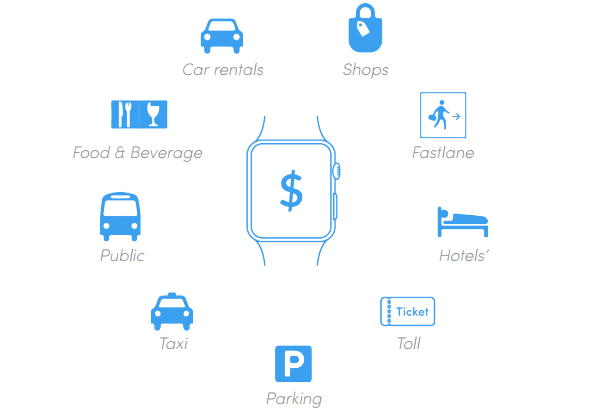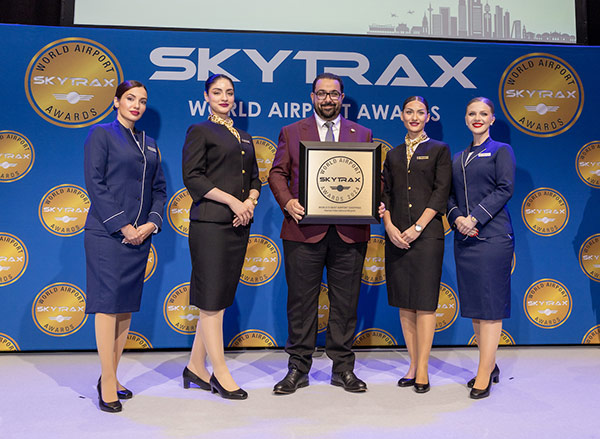 |
“Most airports are still resting on their comfortable non-aviation revenue streams, all the while not realising they need to take urgent action in order to keep their customers satisfied.”
INTERNATIONAL. Dutch mobile agency M2mobi this week published a challenging Whitepaper that examines the impact of digital media on travel retail today and into the future. The Moodie Report presents the full publication, which poses serious questions to the travel retail channel about the lack of progress in this critical media sphere. [NOTE: The opinions expressed in this article are not necessarily those of the Publisher. We welcome your feedback Martin@MoodieDavittReport.com ].
“The problem is that most travel retailers don’t have their systems set up right for this personal attention. Most of them are still stuck in retail’s middle ages“ |
M2mobi |
“Should travel retail embrace the digital revolution as much as the Street does? Does digital even work within travel retail? Or do airport retailers simply not know how to apply digital yet?”
Those are some of the questions posed in the Whitepaper by M2mobi, which notes: “Passenger numbers have been increasing and keep increasing, while the average revenue per passenger is decreasing. Now that passengers have the ability to compare products online, the idea that duty free products are cheaper is long gone.
“Still, we don’t see an urge to innovate digitally within travel retail. Do airport retailers have a long way to go to catch up with the High Street?”
The answer to the final question is a resounding yes, the company says, commenting: “Combining digital and traditional in-person shopping has potential to revolutionise the passenger’s travel retail experience.”
 |
The consumer journey from digital to physical |
It continues: “If we look at the High Street, we’ve seen many brands struggling because they didn’t adapt to the new digital reality. Consumers who order online expect more variety, better prices, and faster service.
“The brands that are surviving on the High Street are the ones that have embraced the digital revolution and are continuously improving their omni-channel strategy. These brands are combining the strength of a digital and a physical shopping presence. So why aren’t we seeing this trend in airports around the world? Is it because digital just doesn’t work in travel retail? Or is it because airport retailers just don’t know how to apply digital yet?
CHANGING PASSENGER EXPECTATIONS: A MORE PERSONAL APPROACH REQUIRED
“Now that passengers have the ability to compare products online, the idea that duty free products are cheaper is long gone“ |
“Because passengers have to be at the airport on time they are more or less forced to use the shopping mall that is built around it. That’s one reason why travel retail hasn’t been hit as hard by digital as high street has.
“However, passenger expectations have changed. These days, they expect a personal approach and online shopping mixed with the offline experience. They are scanning products to see if they can buy them cheaper online and have them shipped to their homes.
“This behaviour is only slowly starting to affect airport retail sales and the revenue per passenger. And, most airports are still resting on their comfortable non-aviation revenue streams, all the while not realising they need to take urgent action in order to keep their customers satisfied.
“We eed to start with the customer,” says M2mobi. “They are already highly accustomed to online shopping and direct services via mobile ordering. Their established online habits have given a whole new range of possibilities to the retailers who have the right ingredients in place.
“The beautiful thing about mobile and wearable connected devices is that they create the opportunity to combine the digital shopping with the physical shopping experience. And being primarily physical, this is where it gets exciting for travel retailers.
“Being able to recognise your customer in a shop gives you the chance to become personal in terms of knowing what this person likes, what he has bought before and whether he deserves a special treatment or not.”
 |
The aim should be to create a kind of “Uber for airports”, where all the available services of an airport will come to you with a single tap, says M2mobi |
Bluetooth beacons can be a powerful tool to enable a personalized approach in airport shops, M2mobi says. It comments: “Since GPS does not work well inside buildings, it becomes hard to know where passengers are within an airport. But, by strategically placing Bluetooth beacons, an app can recognise the beacon’s proximity and thus determine that this person is in your shop.
“If done well, you can set up your digital systems in such a way that customers can connect to their profile and receive personalised suggestions. On the other hand, the physical shopping experience is also rife with personalised opportunities. You can help the staff along in this direction by giving them background information about the customers who are in your shop – saying something as simple as ‘Hello, Mr. Munneke. How did your wife like the perfume you bought for her last month?’ can go a long way in building a memorable, personalised shopping experience.
“‘Travel retailers have taken the first baby steps, but now it is time for a serious change“ |
“The problem is that most travel retailers don’t have their systems set up right for this personal attention. Most of them are still stuck in retail’s middle ages and lack things like a product information management (PIM) system with all their SKUs nicely documented; an e-commerce platform in which their customers can actually buy things; or even a Customer Relationship Management (CRM) system, loyalty programme, or targeted advertisement systems.”
M2mobi says the opportunities are “vast” within a passenger’s journey of the airport, especially if key flight information, wayfinding and leisure elements such as shopping and food are integrated into a single flow.
It comments: “Every mobile travel service that has been introduced, has seen a quick uptake by passengers. Eighty percent of passengers carry a smartphone now. When mobile check-in is available, it is used by more than half of the passengers, and 9 out of 10 users want flight status on their mobile. This indicates that there is a strong demand for a passenger journey where mobile is the primary touch-point.
“We believe that this mobile-first approach is the way to go for airports, retailers and airlines the coming years. Setting up this mobile first strategy will lay the foundations for many innovations.”
 |
Not only should passengers enjoy the majority of their time in an airport, but this enjoyment can be extended if they can access the airport services digitally |
THE NEED FOR STRESS-BUSTING SOLUTIONS
The prime business model leads back to the main passenger problem: stress, M2mobie contends. “When passengers have to run to their gates only to experience the frustration of having to sit and wait for their flights, stress results,” it argues. “Finding ways to reduce passengers’ stress levels will create trust, and therefore confidence, that there is enough time to relax in the lounges, go shopping, and do things that improve the total travel experience. Decreases in passengers’ stress levels will result
in revenue increases.
“Apart from the relaxed passenger who has more time to spend in the lounges, there is also a more direct business model, mCommerce. The duty free zone is a perfect place to shop, but what if you could already figure out which shops to go to, and which items are on sale before you got there? Also, why should you drag all those bags with you during your trip if you don’t really need to?”
“Simple solutions like hiring a digital manager won’t do the job. Rather, it is time for a company-wide sea change in which every retail employee understands and embraces the new digital opportunities“ |
M2mobi |
A UBER FOR AIRPORTS?
M2mobi says there are many possibilities pre- and post- travel to create an integrated online and offline travel experience. “The aim here should be to create a kind of ‘Uber for airports’ where all the available services of an airport will come to you with a single tap,” it says.
“This means you can have a coffee delivered at the gate, or a rental car waiting for you right outside the main exit. Passengers can browse the collection on their way to the airport and use the showroom to select and get a better feel for the products. Ultimately passengers want to have single-click services experience.”
 |
This graph shows eight factors that can affect the level of personalisation a passenger experiences, ranging from the passenger’s location to his or her final destination |
PERSONALISED OFFERS
At Amsterdam Airport Schiphol, 21% of the passengers have indicated they didn’t shop because they didn’t get any relevant offers, M2mobi claims. “If the airport knows their flight, their gate, their shopping history and their preferences, why can’t it be more personal in its offerings?” it asks.
Personalisation and context are key to creating an experience that is relevant to the user, the company continues. “With such a wide range of services and products to offer, we need to be able to get this right.
“There is no use in offering a parking spot to someone who travels by train or to send offers to passengers who are in a hurry to board their plane. There are a lot of factors and existing data that we can use to predict whether a certain passenger might be interested in a certain offering.
Contact: Michiel Munneke General Director M2mobi Munneke@m2mobi.com +31 6 20 00 33 30 www.m2mobi.com |
In the image above, eight factors that can affect the level of personalisation a passenger experiences are shown, ranging from the passenger’s location to his or her final destination. Obviously, time is an important factor in these offerings. For example, the time of day defines whether to offer someone a breakfast or lunch.”
FROM BABY STEPS TO A SEA-CHANGE
There is a long way to go for airport retailers to catch up with the High Street, M2mobi concludes. “The situation is different, so a different approach should be taken,” it says. Travel retailers have taken the first baby steps, but now it is time for a serious change.
“Simple solutions like hiring a digital manager won’t do the job. Rather, it is time for a company-wide sea change in which every retail employee understands and embraces the new digital opportunities. If they get this right, there is a lot to gain for the airport, the passenger and the retailer.




